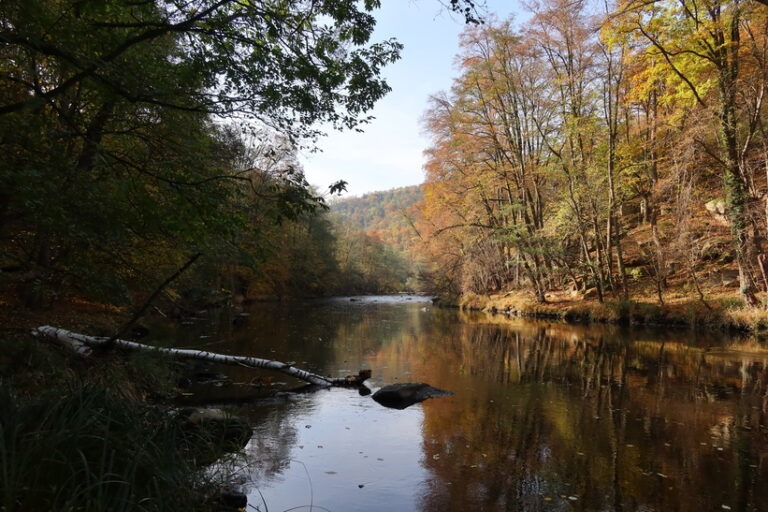In the Thayatal National Park, the tumult of history has allowed nature to flourish
—–
Everybody has their favourite places. Places to which they feel drawn, where they feel somehow at peace. Perhaps they feel better able to think there, or find balance when times are rough.
For me, the borderlands between Austria and the Czech Republic are such a place. I have a particularly strong affection for the Thayatal – a dramatic river valley stretching cross the AT-CZ border. It is covered by two national parks: the Thayatal National Park on the Austrian side and the Národní park Podyjí on the Czech side. Each one as beautiful as the other.
I return there as often as possible to walk and to enjoy the food, culture, quiet, and breath-taking scenery.
It’s also a place where you can get a very strong, very immediate feeling for the history and the turmoil of the 20th century. First, the fall of the Austro-Hungarian Empire and the establishment of Czechoslovakia. Then, the 2nd World War, the expulsion of the German-speaking populations from Czechoslovakia and the construction and fall of the Iron Curtail and Communism. And finally – European integration within the framework of the EU and the passport-free Schengen zone.
Thayatal National Park – history at every turn
Quite apart from the epic history, the region has an undeniably mystical quality to it. Ley lines are supposed to cross here. However you feel about that kind of thing – there is definitely a special energy there that I like to feel and absorb. I always come back from it feeling calm, content and rejuvenated.
Our Sunday hike took us from the picturesque town of Retz in Austria’s wine-growing region across the Czech border to the town of Znojmo (DE: Znaim), about 23km away.
The path first took us up into the woods of the Mannhartsberg, marking the Western end of the climatic zone suitable for winegrowing. Trying our best not to miss the tricky yellow path markings, we soon dropped down to Heiliger Stein, just 200m away from the CZ border. This historic site appears to have had some kind of religious/ritual significance for tens of thousands of years. An ancient cupstone can be seen there – thought to have been used for fertility rituals in prehistoric times.
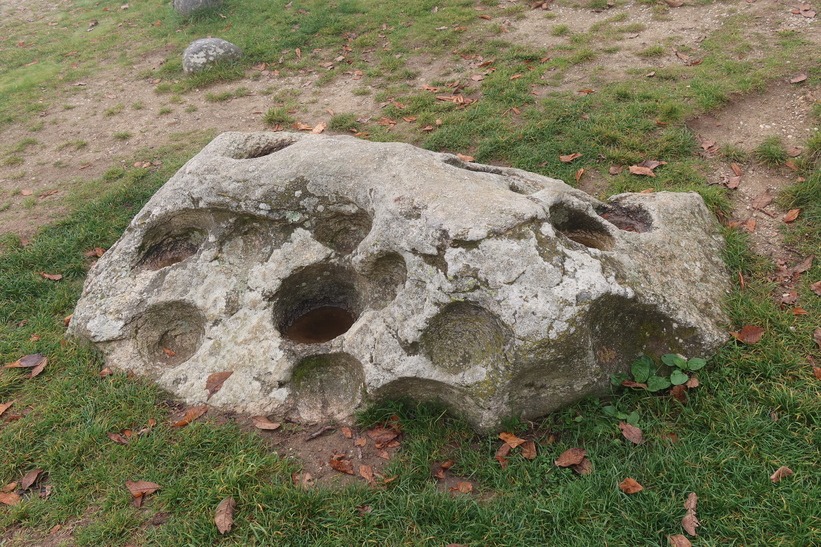
Church foundations
However, the site is dominated by the restored foundations of an old church, “Unsere liebe Frau am Stein” (Our Lady of the Stone). A cripple was believed to have been cured of his disability after bathing in the waters of the nearby spring. The spot became a popular pilgrimage destination for people seeking relief from various ailments, especially those restricting the ability to walk. A church was constructed for the pilgrims, and the spring water diverted into it. The church was demolished in the late 1700s at the order of Kaiser Josef II due to concerns about the superstition which had caused its rise.
While excavating the site, archaeologists found a large number of crutches and walking aids left by crippled pilgrims. The authorities have erected a wooden walkway around the ruins to provide a viewing point for the excavations and surrounding countryside.
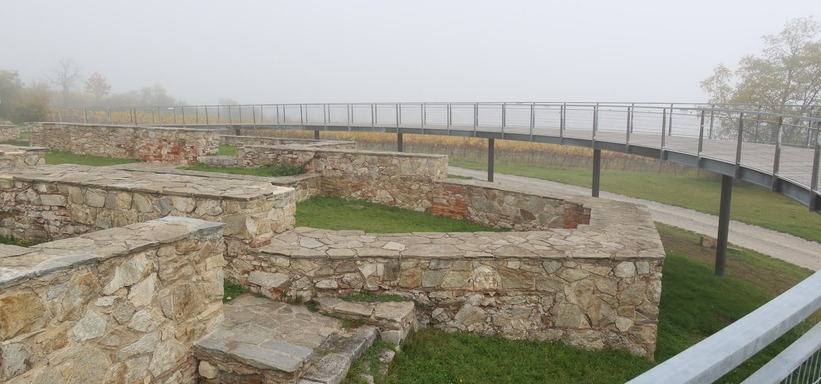
Across the old Iron Curtain
For someone who grew up on an island, walking across a border will never not be incredible. And this is not any old border, but the site of the former Iron Curtain. Having been born in the early 80s, I clearly remember this searing division of Europe. I also have a number of friends who grew up under Communism and I must say – regardless of how I feel about the EU on a political level – that this separation is now firmly in the past and that people can now move around freely is something that we should never take for granted. I always like to take a moment to think about that and be grateful whenever I cross a border in this neck of the woods.
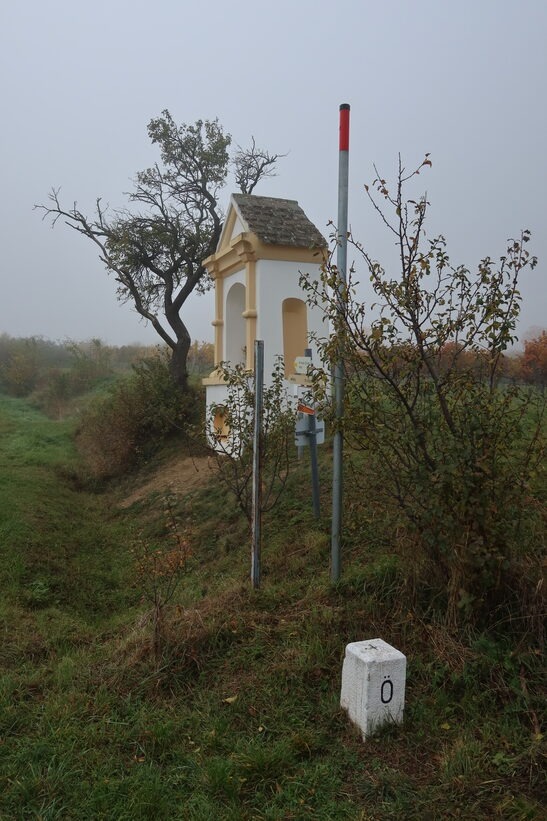
Slowly pulling out of the morning mist, we pass the village of Hnanice (Gnadlersdorf), set among vineyards which glisten gold and red against the blue sky starting to break through. Before long, we drop down to the Thaya river (CZ: Dyje), deeply embedded in a dramatic forested gorge. Soon, we reach Devět mlýnů (Neunmühlen in German, or the Prospect of the Nine Mills).
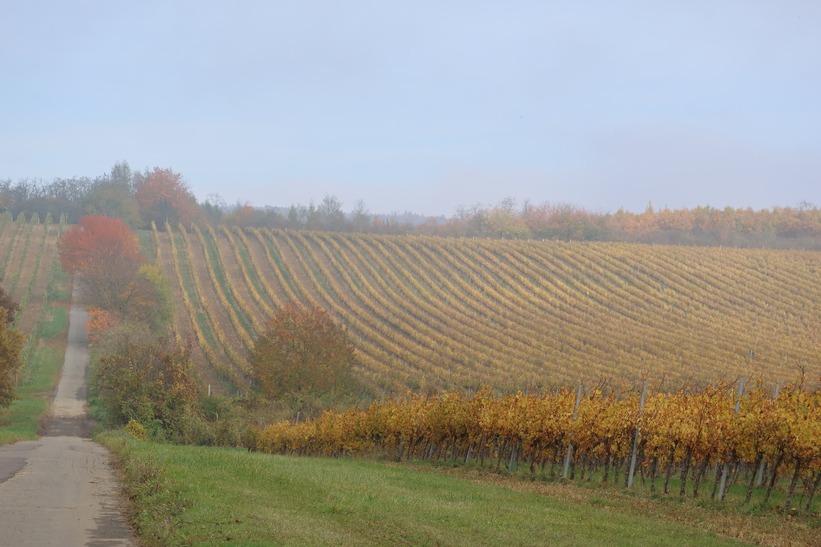
Devět mlýnů/The Prospect of the Nine Mills
Once a thriving milling community which then gave way to a popular restaurant and daytrip destination set among hillside farm terraces, Devět mlýnů was dealt a killer blow by the construction of the Iron Curtain. Due to its location so close to the Austro-Czech border, property was requisitioned, residents moved out and the old mill streams and equipment dismantled. Czechoslovakian authorities erected watchtowers to monitor and defend the border.
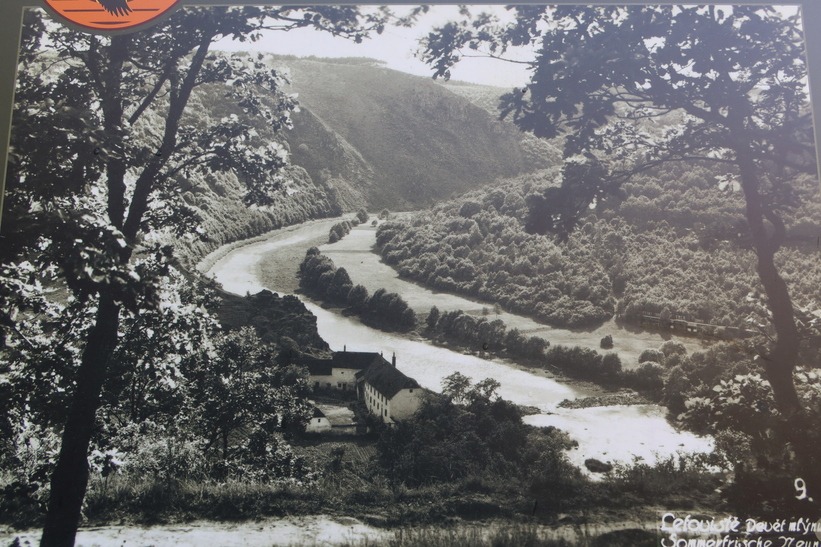
Despite the immense hardship and suffering caused by these geopolitical events – they did have one benefit. In this deserted place, nature was able to completely take over. The once tidy farming terraces fell back into forest; the mill buildings slowly crumbled. Populations of rare species such as the notoriously shy European wildcat were able to flourish as almost nowhere else in Europe.
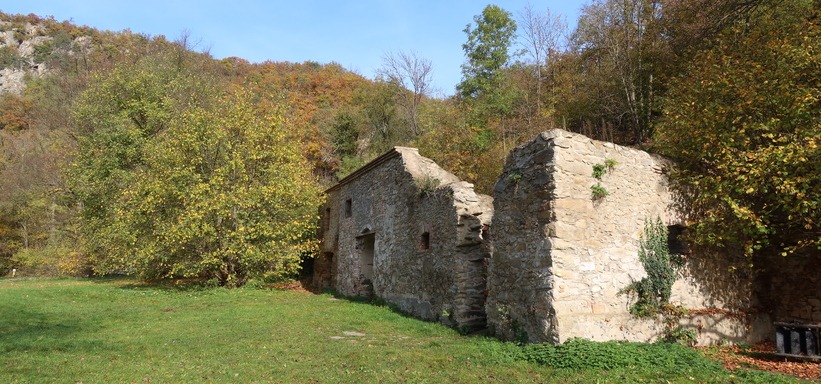
After enjoying our first sandwiches at a picnic table in one of the old mill buildings, we head off along the river. It is a path of such loveliness that we have to keep stopping to take photos or simply enjoy the sound of the flowing water, rustling leaves and gentle birdsong.
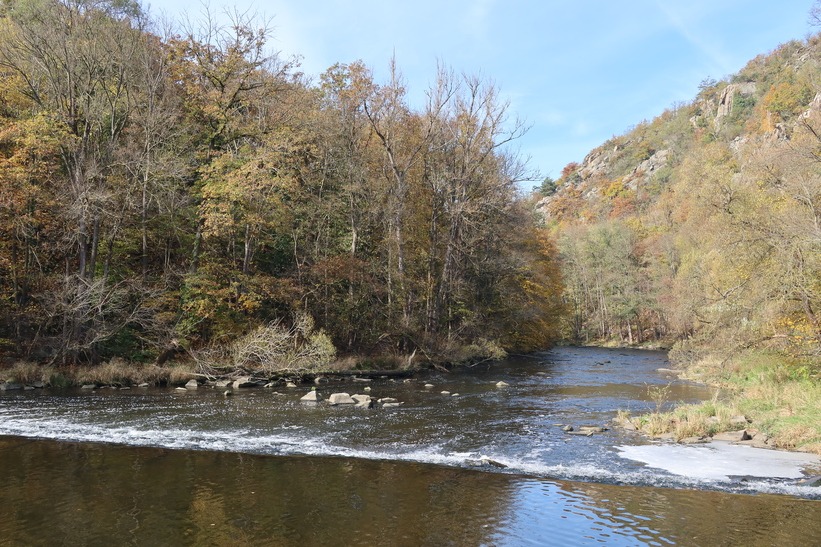
Sealsfield rocks
Onto Sealsfield rocks (Sealsfieldův Kámen) for our second sandwich. This viewpoint, high up over the river, is named after the Austrian-American writer Charles Sealsfield who apparently liked to come here to enjoy the view and reflect. And you have to admit, the man knew a top spot when he saw one! Even with the fog beginning to close in on us again, we are able to admire the Thaya valley in all its fiery autumn finery.
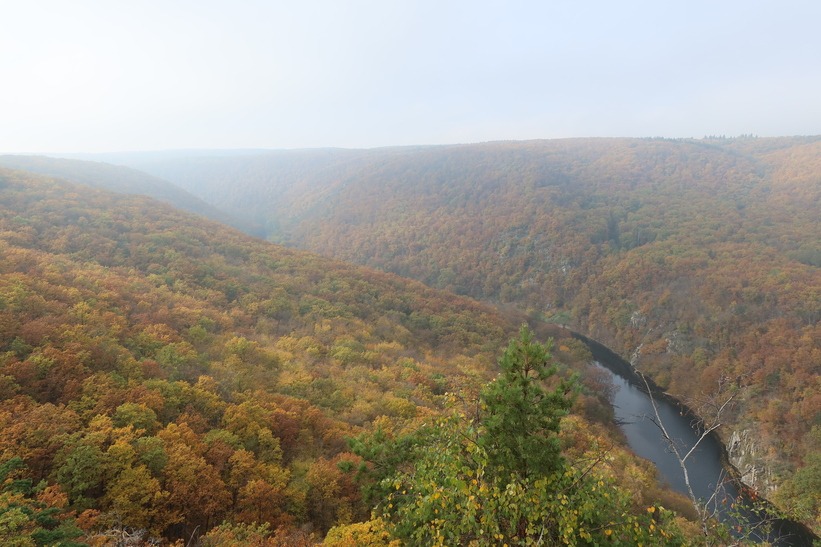
By the time we get to Znojmo, the fog has well and truly taken over. There is only a muted view of this fairytale town high up on the rocks.
To any tourists thinking of heading to the tourist hotspot of Cesky Krumlov, I say: forget that and come to Znojmo. It’s just as pretty, there aren’t many tourists, and the prices are significantly lower. Plus, there’s a fab brewery and excellent local wines too. The Christmas market, held around the 10th of December each year, is charming and authentic. Locals come in from all around to sell their wares – from homemade pickles and delicious Glühwein to handmade wooden goods and embroidered textiles. Why would you choose overcommercialised, overpriced Krumlov over that?
It’s been a fabulous day. After a coffee and a non-alcoholic beer in a café, we bid farewell to Znojmo and the Thayatal National Park. I know it won’t be long until we are back.
—–
Related articles:
The strange story of the 2-day Republic of Heinzenland
Sopron, Hungary – A daytrip to visit the “wild neighbours”
18 years living in Vienna – some throughts on a very special anniversary
—–
Photos – author’s own.
